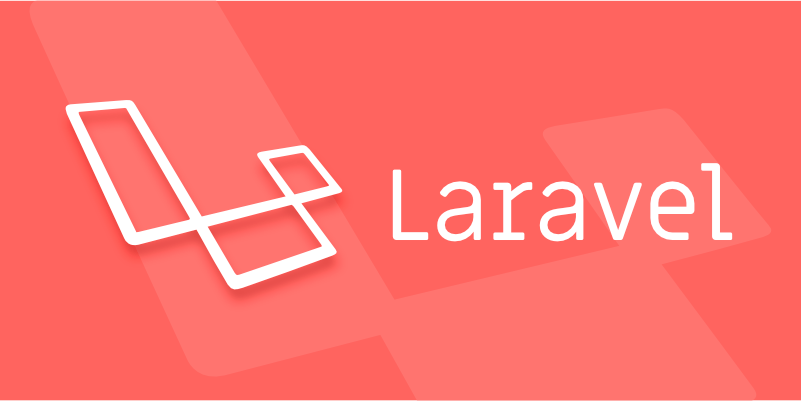How to broadcast events with Laravel Echo?
Jul 24, 2025 am 04:02 AMTo successfully implement event broadcasting in Laravel, you must first configure the broadcast driver and install the necessary dependencies. 1. Set BROADCAST_DRIVER=redis in the .env file, and install laravel-echo and pusher-js; 2. Configure the Pusher connection information in config/broadcasting.php, and fill in PUSHER_APP_ID, KEY, SECRET and CLUSTER in the .env; 3. Introduce Laravel Echo on the front end, and pass in MIX_PUSHER_APP_KEY and MIX_PUSHER_APP_CLUSTER environment variables during initialization; 4. Create an event class that implements the ShouldBroadcast interface, define broadcastOn return channel (Channel or PrivateChannel), and you can choose to customize broadcastAs event name; 5. Use Echo.channel('chat') or Echo.private('chat') to listen to events on the front end to ensure that the event name is consistent with the broadcastAs definition; 6. Trigger events through event() or dispatch() in the controller or route; If you use a private channel, you also need to define authorization logic in routes/channels.php to ensure that the user can access it after authentication, and finally run php artisan serve and npm run dev to start the service and compile resources, and the entire process can realize real-time communication function.

Broadcasting events in Laravel using Laravel Echo is a great way to add real-time functionality to your app. Here's a clear, step-by-step guide to get it working properly.

? 1. Set up broadcasting and Laravel Echo
First, make sure broadcasting is enabled in Laravel.
Enable Broadcasting in .env
BROADCAST_DRIVER=redis
Install required packages
You'll need Pusher (or use Redis Socket.io for self-hosted):

npm install --save laravel-echo pusher-js
If you're using Pusher , this is the easiest option for beginners.
? 2. Configure broadcasting (Pusher example)
Update config/broadcasting.php
Make sure your Pusher settings are correct:

'connections' => [
'pusher' => [
'driver' => 'pusher',
'key' => env('PUSHER_APP_KEY'),
'secret' => env('PUSHER_APP_SECRET'),
'app_id' => env('PUSHER_APP_ID'),
'options' => [
'cluster' => env('PUSHER_APP_CLUSTER'),
'host' => env('PUSHER_HOST') ?: 'api-'.env('PUSHER_APP_CLUSTER').'.pusher.com',
'port' => env('PUSHER_PORT', 443),
'scheme' => env('PUSHER_SCHEME', 'https'),
'encrypted' => true,
'useTLS' => true,
],
],
], Add to .env
PUSHER_APP_ID=your_app_id PUSHER_APP_KEY=your_app_key PUSHER_APP_SECRET=your_secret PUSHER_APP_CLUSTER=mt1
? 3. Set up Laravel Echo in your frontend
In your main JavaScript file (eg, resources/js/bootstrap.js or app.js ):
import Echo from 'laravel-echo';
window.Pusher = require('pusher-js');
window.Echo = new Echo({
broadcaster: 'pusher',
key: process.env.MIX_PUSHER_APP_KEY,
cluster: process.env.MIX_PUSHER_APP_CLUSTER,
forceTLS: true,
encrypted: true,
});Make sure to expose the Pusher key to the frontend by running:
php artisan vendor:publish --tag=laravel-mixAnd ensure
.envvariables are prefixed withMIX_to be available in JS:MIX_PUSHER_APP_KEY="${PUSHER_APP_KEY}" MIX_PUSHER_APP_CLUSTER="${PUSHER_APP_CLUSTER}"
? 4. Create a broadcastable event
Generate an event:
php artisan make:event NewMessagePosted
Edit the event class:
<?php
namespace App\Events;
use Illuminate\Broadcasting\Channel;
use Illuminate\Broadcasting\InteractsWithSockets;
use Illuminate\Broadcasting\PresenceChannel;
use Illuminate\Broadcasting\PrivateChannel;
use Illuminate\Contracts\Broadcasting\ShouldBroadcast;
use Illuminate\Foundation\Events\Dispatchable;
use Illuminate\Queue\SerializesModels;
class NewMessagePosted implements ShouldBroadcast
{
use Dispatchable, InteractsWithSockets, SerializesModels;
public $message;
public function __construct($message)
{
$this->message = $message;
}
public function broadcastOn()
{
return new Channel('chat'); // or PrivateChannel for private
}
public function broadcastAs()
{
return 'message.sent'; // optional: custom event name
}
}Tip: Use
PrivateChannel('chat')if you want authentication.
? 5. Listen for the event with Laravel Echo
In your frontend JS (eg, a Vue component or plain script):
Echo.channel('chat')
.listen('message.sent', (e) => {
console.log(e.message);
});If you used
broadcastAs(), don't include the event namespace (eg,App\\Events\\). Just use the name you defined.
? 6. Dispatch the event from Laravel
In a controller or route:
use App\Events\NewMessagePosted; // ... event(new NewMessagePosted('Hello everyone!'));
Or:
NewMessagePosted::dispatch('Hello world');
? Optional: Authenticate private channels
If using PrivateChannel , you need to set up auth.
Create a route for authorization:
// routes/channels.php
Broadcast::channel('chat', function ($user) {
return $user ? true : false; // return user data or true to authorize
});Then in JS:
Echo.private('chat')
.listen('message.sent', (e) => {
console.log(e.message);
}); Laravel will automatically make a POST request to /broadcasting/auth to verify access.
?? Run the development server
Make sure the Laravel development server is running:
php artisan serve
And run Vite or Mix to compile assets:
npm run dev
Also, if using Pusher, you can use their debug console to see events in real time.
Summary
To broadcast events with Laravel Echo:
- ? Enable broadcasting (Pusher or Redis)
- ? Install and configure Laravel Echo Pusher JS
- ? Create an event that implements
ShouldBroadcast - ? Use
Echo.channel()orEcho.private()to listen - ? Dispatch the event in Laravel
It's not complex once the config is right — but small mistakes in keys, channels, or event naming can break it silently.
Basically, get the key/cluster right, expose them via MIX_ , and make sure your event actually broadcasts. Test with the Pusher dashboard if needed.
The above is the detailed content of How to broadcast events with Laravel Echo?. For more information, please follow other related articles on the PHP Chinese website!

Hot AI Tools

Undress AI Tool
Undress images for free

Undresser.AI Undress
AI-powered app for creating realistic nude photos

AI Clothes Remover
Online AI tool for removing clothes from photos.

Clothoff.io
AI clothes remover

Video Face Swap
Swap faces in any video effortlessly with our completely free AI face swap tool!

Hot Article

Hot Tools

Notepad++7.3.1
Easy-to-use and free code editor

SublimeText3 Chinese version
Chinese version, very easy to use

Zend Studio 13.0.1
Powerful PHP integrated development environment

Dreamweaver CS6
Visual web development tools

SublimeText3 Mac version
God-level code editing software (SublimeText3)
 Working with pivot tables in Laravel Many-to-Many relationships
Jul 07, 2025 am 01:06 AM
Working with pivot tables in Laravel Many-to-Many relationships
Jul 07, 2025 am 01:06 AM
ToworkeffectivelywithpivottablesinLaravel,firstaccesspivotdatausingwithPivot()orwithTimestamps(),thenupdateentrieswithupdateExistingPivot(),managerelationshipsviadetach()andsync(),andusecustompivotmodelswhenneeded.1.UsewithPivot()toincludespecificcol
 Sending different types of notifications with Laravel
Jul 06, 2025 am 12:52 AM
Sending different types of notifications with Laravel
Jul 06, 2025 am 12:52 AM
Laravelprovidesacleanandflexiblewaytosendnotificationsviamultiplechannelslikeemail,SMS,in-appalerts,andpushnotifications.Youdefinenotificationchannelsinthevia()methodofanotificationclass,andimplementspecificmethodsliketoMail(),toDatabase(),ortoVonage
 Understanding Dependency Injection in Laravel?
Jul 05, 2025 am 02:01 AM
Understanding Dependency Injection in Laravel?
Jul 05, 2025 am 02:01 AM
Dependency injection automatically handles class dependencies through service containers in Laravel without manual new objects. Its core is constructor injection and method injection, such as automatically passing in the Request instance in the controller. Laravel parses dependencies through type prompts and recursively creates the required objects. The binding interface and implementation can be used by the service provider to use the bind method, or singleton to bind a singleton. When using it, you need to ensure type prompts, avoid constructor complications, use context bindings with caution, and understand automatic parsing rules. Mastering these can improve code flexibility and maintenance.
 Strategies for optimizing Laravel application performance
Jul 09, 2025 am 03:00 AM
Strategies for optimizing Laravel application performance
Jul 09, 2025 am 03:00 AM
Laravel performance optimization can improve application efficiency through four core directions. 1. Use the cache mechanism to reduce duplicate queries, store infrequently changing data through Cache::remember() and other methods to reduce database access frequency; 2. Optimize database from the model to query statements, avoid N 1 queries, specifying field queries, adding indexes, paging processing and reading and writing separation, and reduce bottlenecks; 3. Use time-consuming operations such as email sending and file exporting to queue asynchronous processing, use Supervisor to manage workers and set up retry mechanisms; 4. Use middleware and service providers reasonably to avoid complex logic and unnecessary initialization code, and delay loading of services to improve startup efficiency.
 Managing database state for testing in Laravel
Jul 13, 2025 am 03:08 AM
Managing database state for testing in Laravel
Jul 13, 2025 am 03:08 AM
Methods to manage database state in Laravel tests include using RefreshDatabase, selective seeding of data, careful use of transactions, and manual cleaning if necessary. 1. Use RefreshDatabasetrait to automatically migrate the database structure to ensure that each test is based on a clean database; 2. Use specific seeds to fill the necessary data and generate dynamic data in combination with the model factory; 3. Use DatabaseTransactionstrait to roll back the test changes, but pay attention to its limitations; 4. Manually truncate the table or reseed the database when it cannot be automatically cleaned. These methods are flexibly selected according to the type of test and environment to ensure the reliability and efficiency of the test.
 Choosing between Laravel Sanctum and Passport for API authentication
Jul 14, 2025 am 02:35 AM
Choosing between Laravel Sanctum and Passport for API authentication
Jul 14, 2025 am 02:35 AM
LaravelSanctum is suitable for simple, lightweight API certifications such as SPA or mobile applications, while Passport is suitable for scenarios where full OAuth2 functionality is required. 1. Sanctum provides token-based authentication, suitable for first-party clients; 2. Passport supports complex processes such as authorization codes and client credentials, suitable for third-party developers to access; 3. Sanctum installation and configuration are simpler and maintenance costs are low; 4. Passport functions are comprehensive but configuration is complex, suitable for platforms that require fine permission control. When selecting, you should determine whether the OAuth2 feature is required based on the project requirements.
 Implementing Database Transactions in Laravel?
Jul 08, 2025 am 01:02 AM
Implementing Database Transactions in Laravel?
Jul 08, 2025 am 01:02 AM
Laravel simplifies database transaction processing with built-in support. 1. Use the DB::transaction() method to automatically commit or rollback operations to ensure data integrity; 2. Support nested transactions and implement them through savepoints, but it is usually recommended to use a single transaction wrapper to avoid complexity; 3. Provide manual control methods such as beginTransaction(), commit() and rollBack(), suitable for scenarios that require more flexible processing; 4. Best practices include keeping transactions short, only using them when necessary, testing failures, and recording rollback information. Rationally choosing transaction management methods can help improve application reliability and performance.
 Handling HTTP Requests and Responses in Laravel.
Jul 16, 2025 am 03:21 AM
Handling HTTP Requests and Responses in Laravel.
Jul 16, 2025 am 03:21 AM
The core of handling HTTP requests and responses in Laravel is to master the acquisition of request data, response return and file upload. 1. When receiving request data, you can inject the Request instance through type prompts and use input() or magic methods to obtain fields, and combine validate() or form request classes for verification; 2. Return response supports strings, views, JSON, responses with status codes and headers and redirect operations; 3. When processing file uploads, you need to use the file() method and store() to store files. Before uploading, you should verify the file type and size, and the storage path can be saved to the database.






